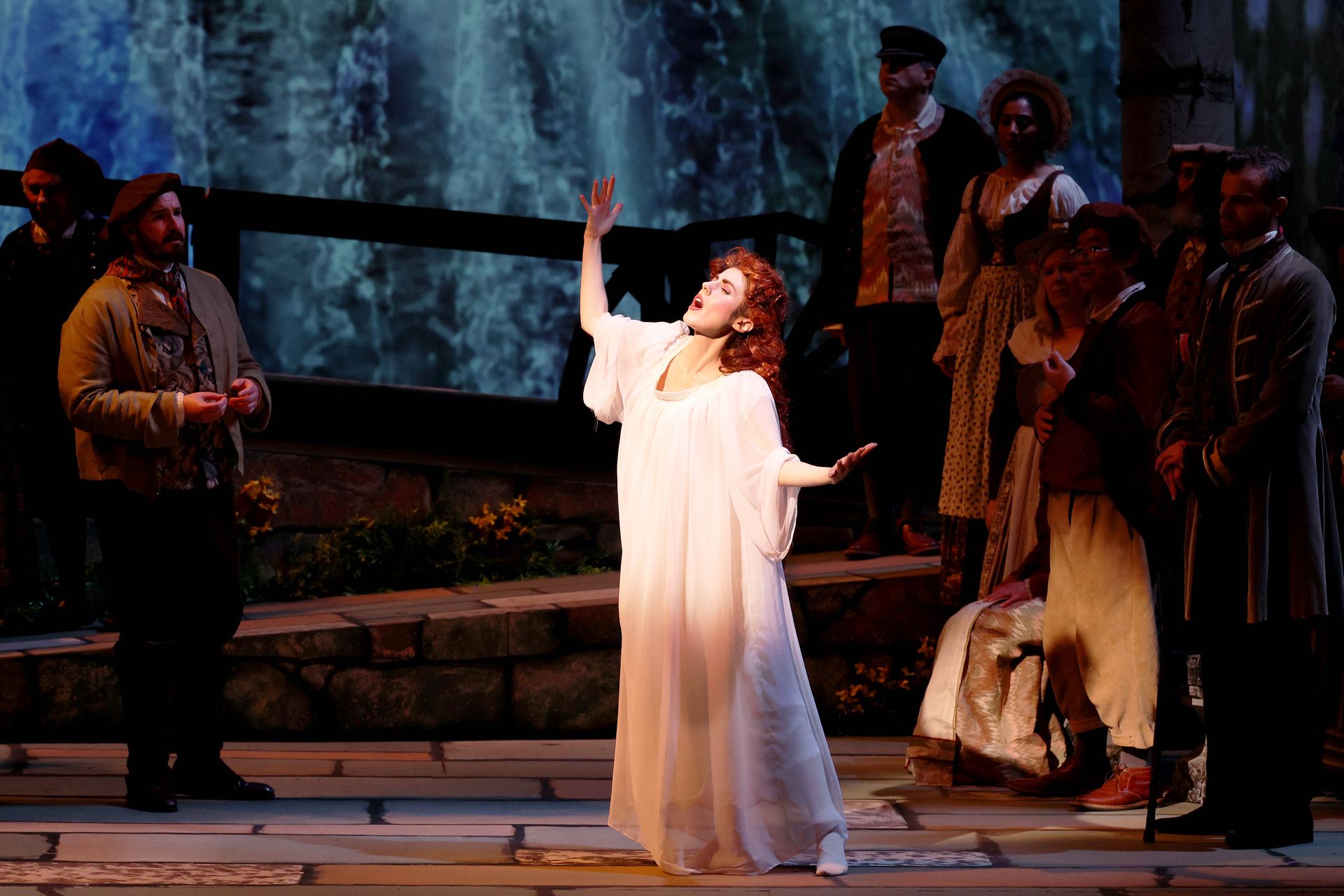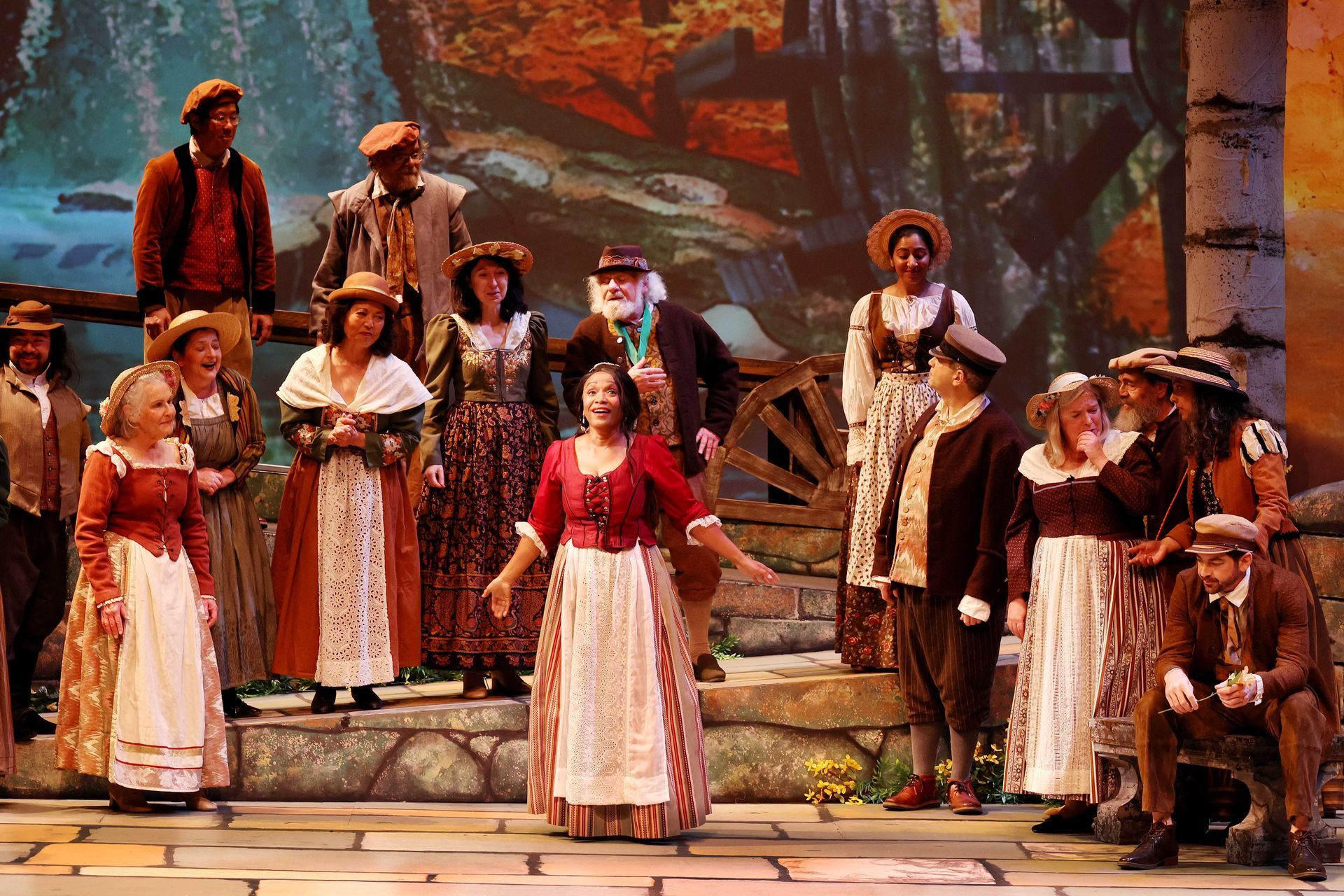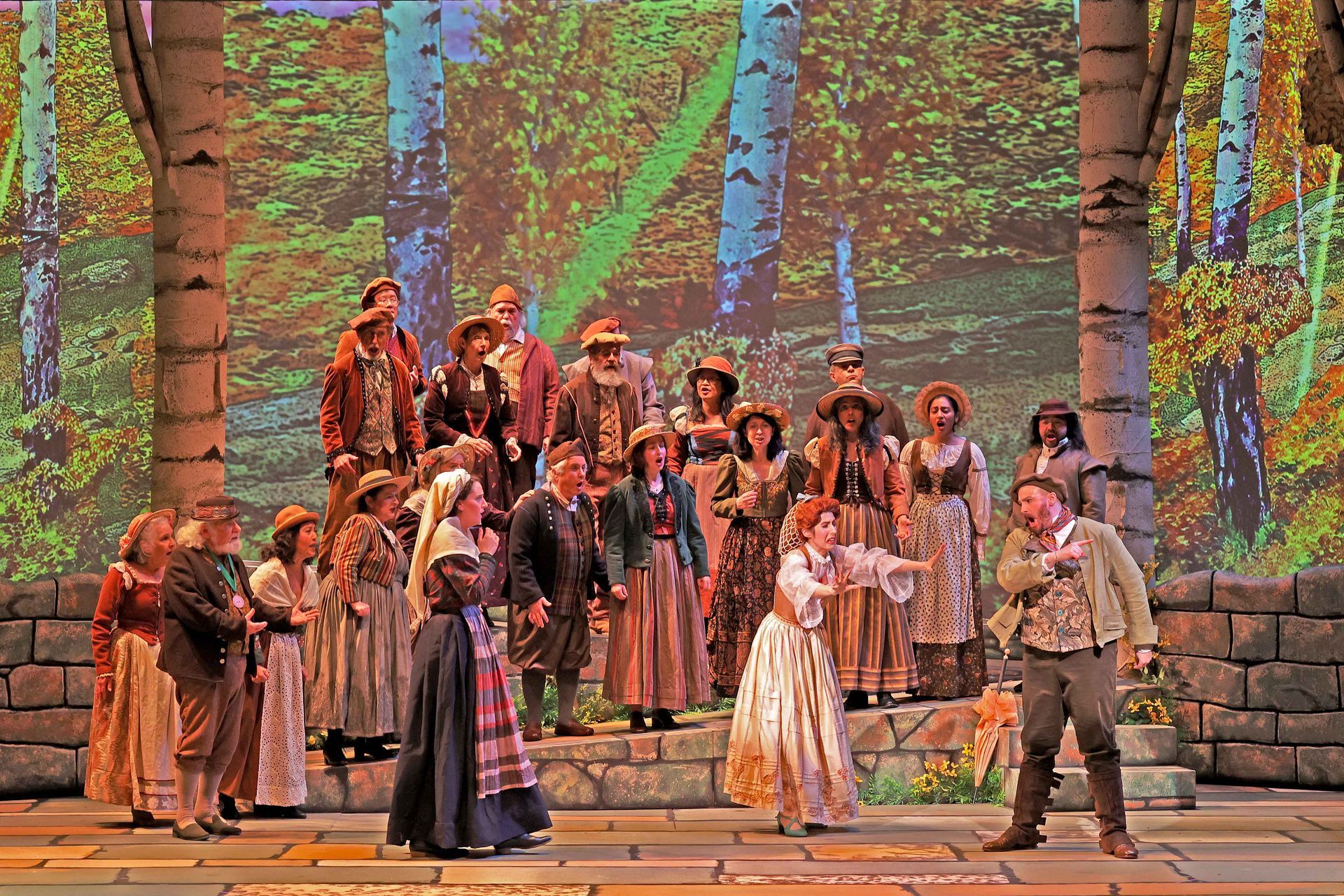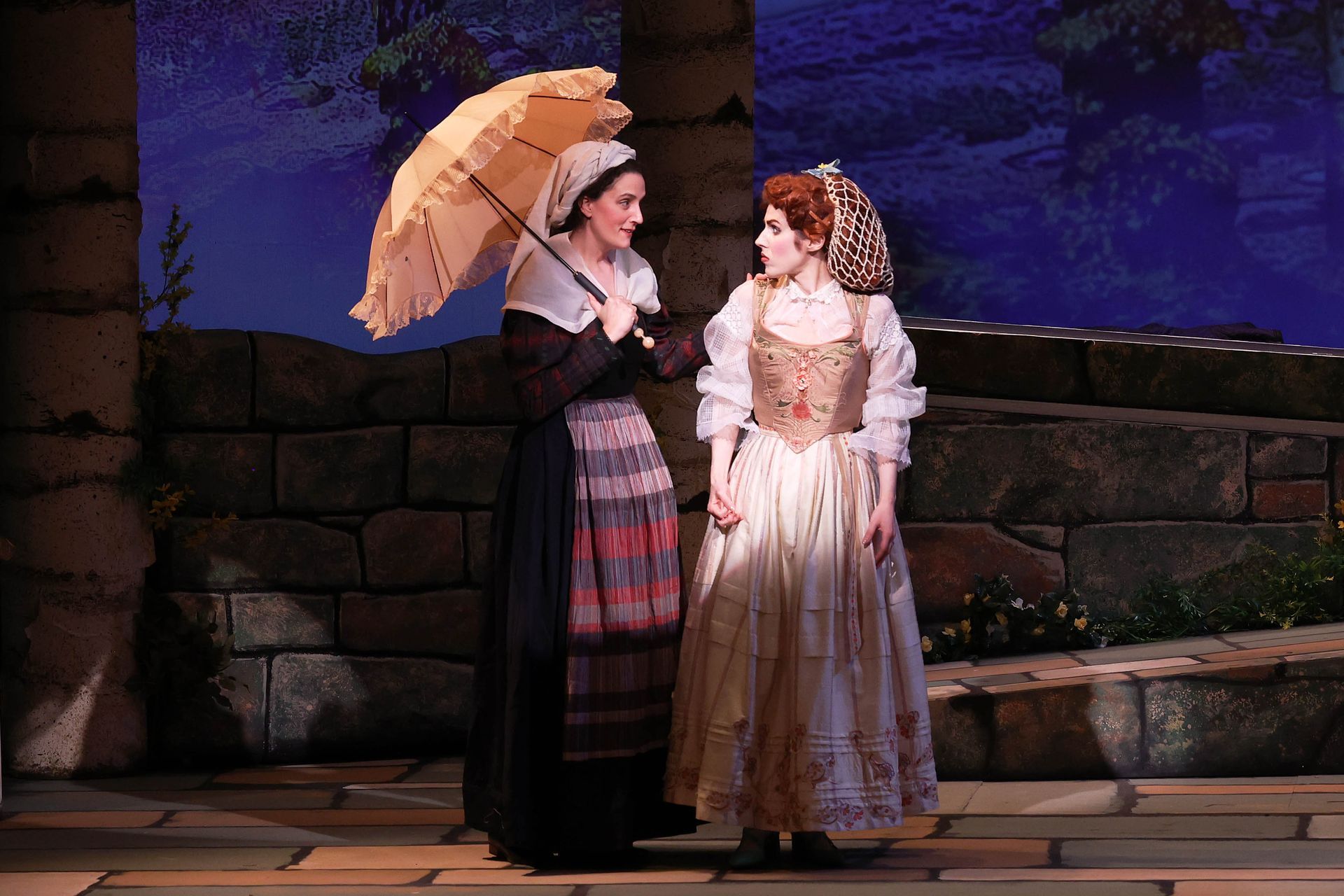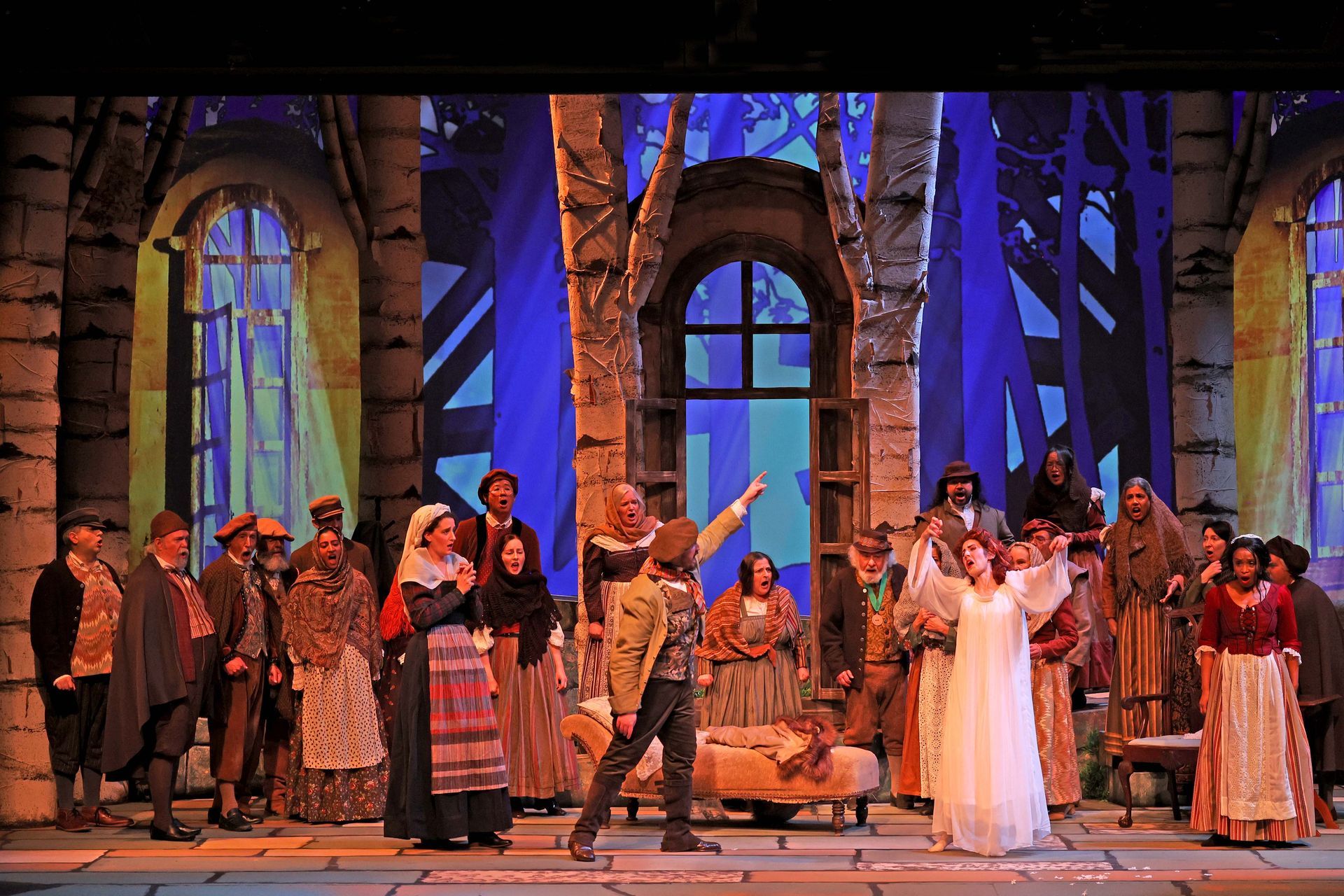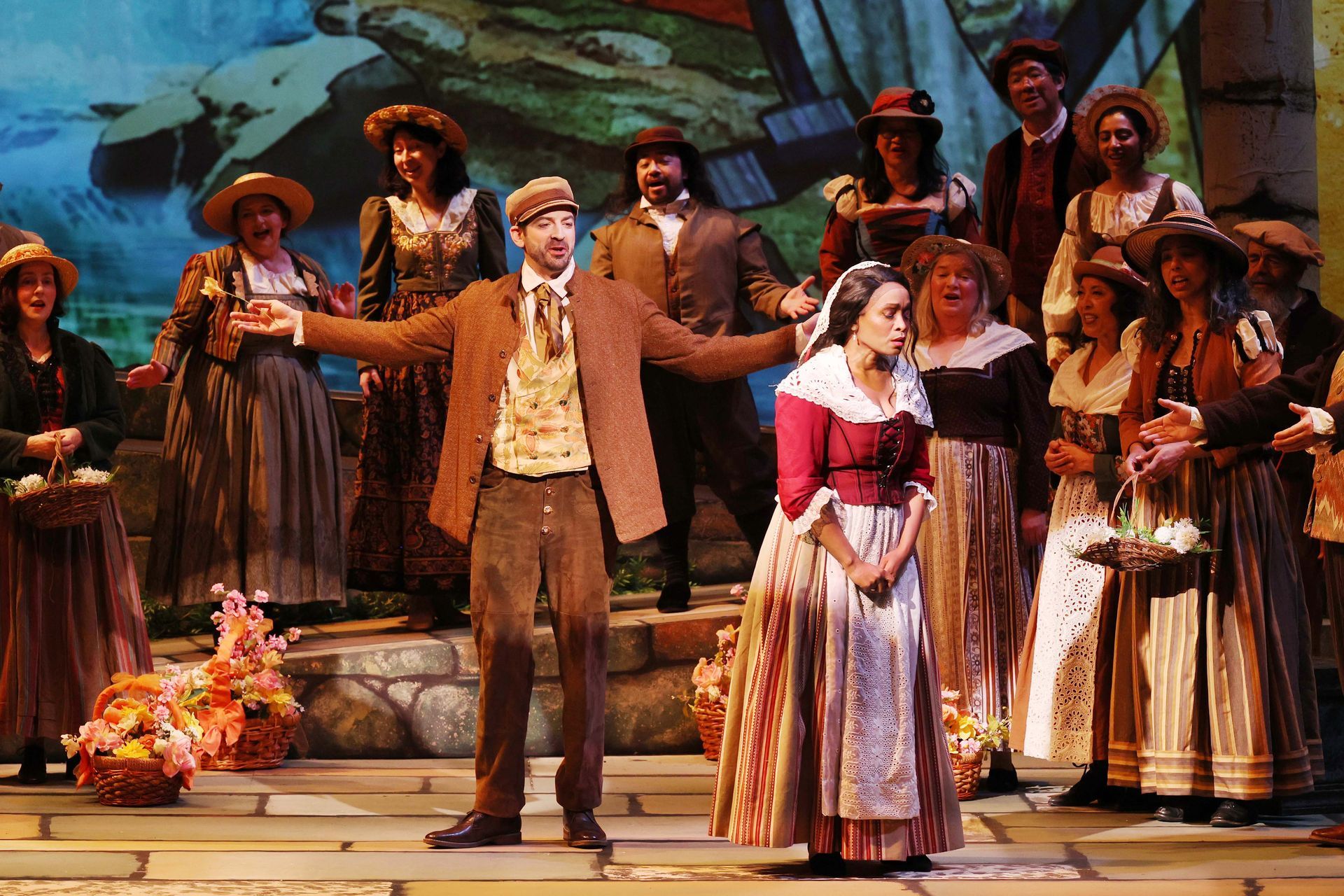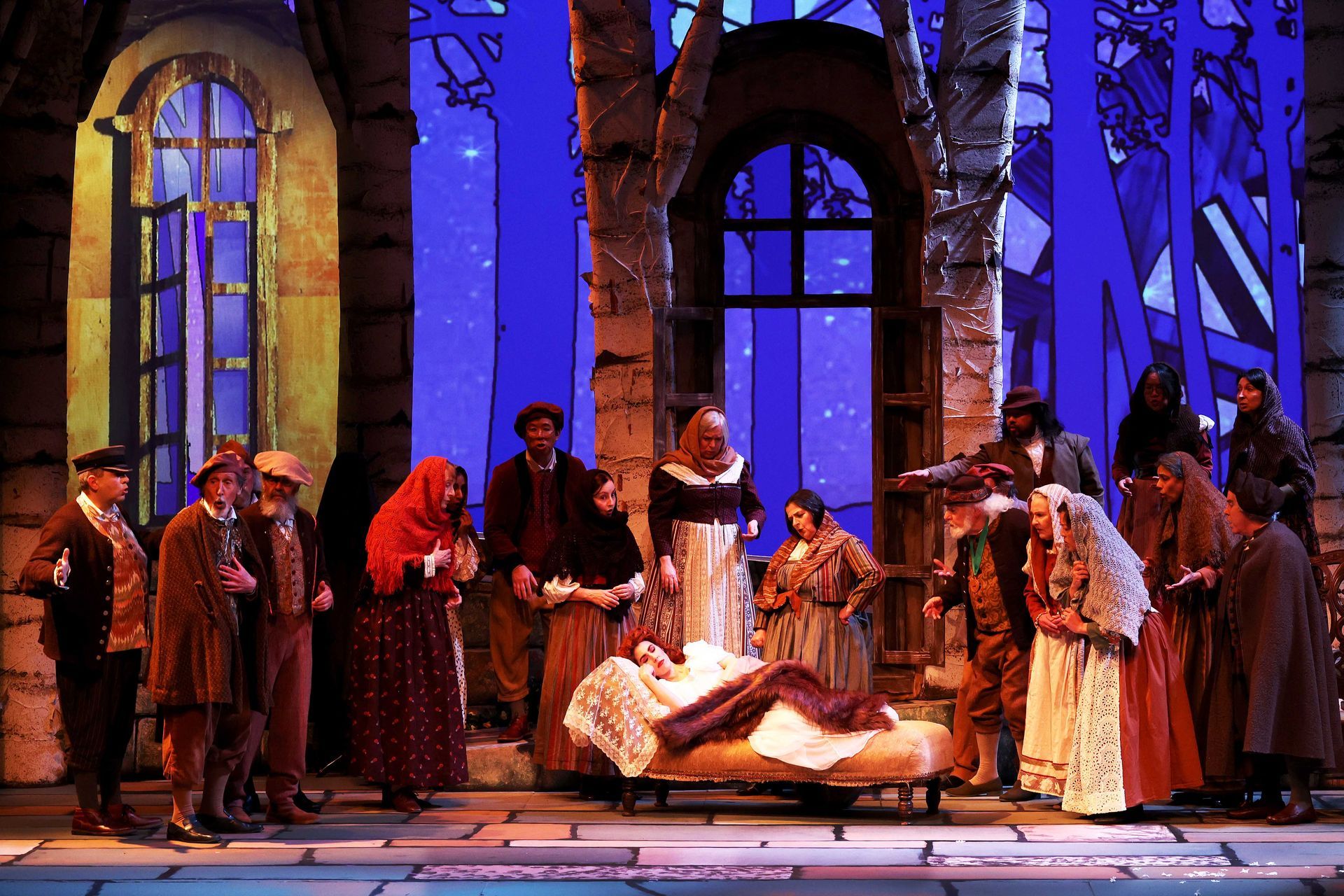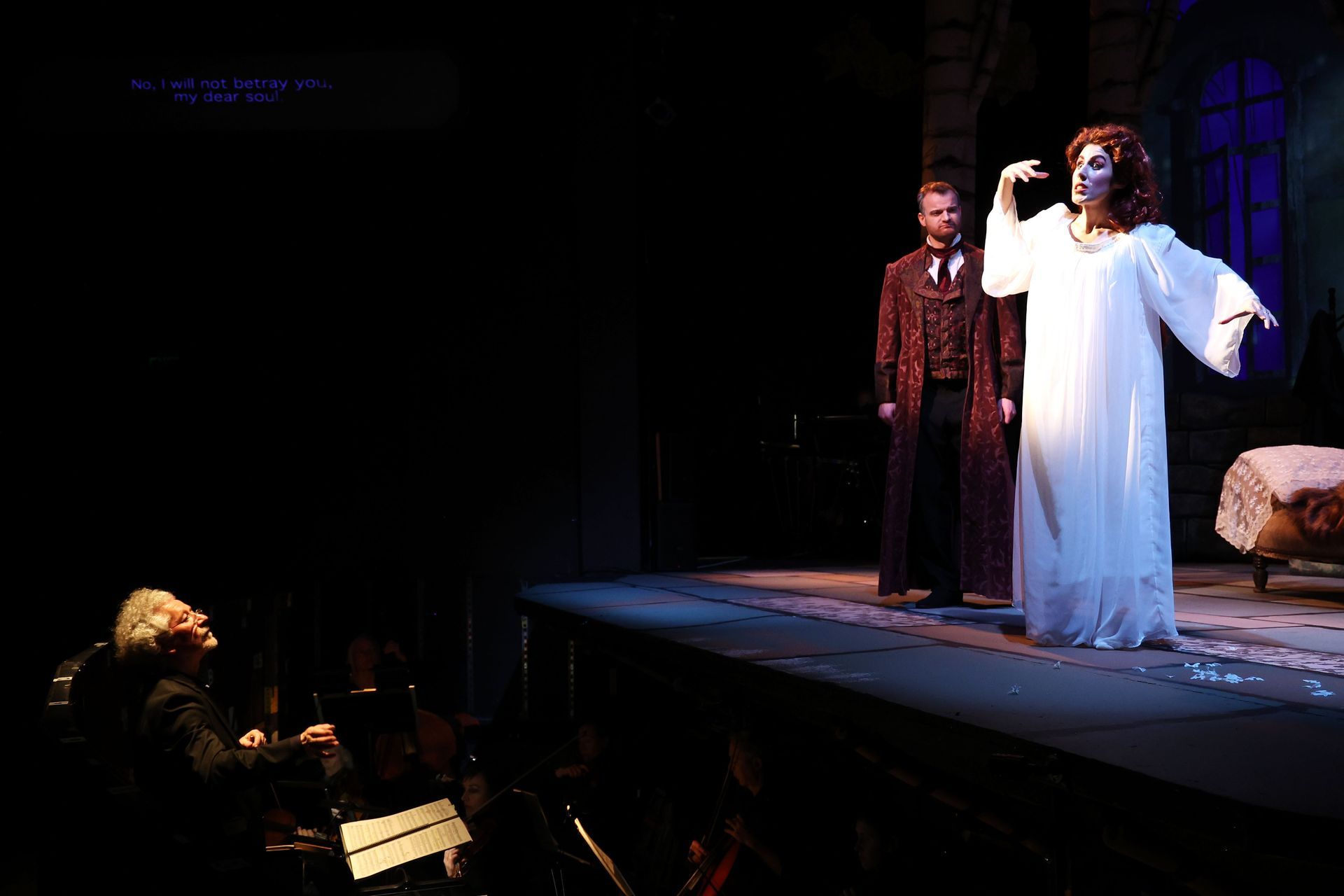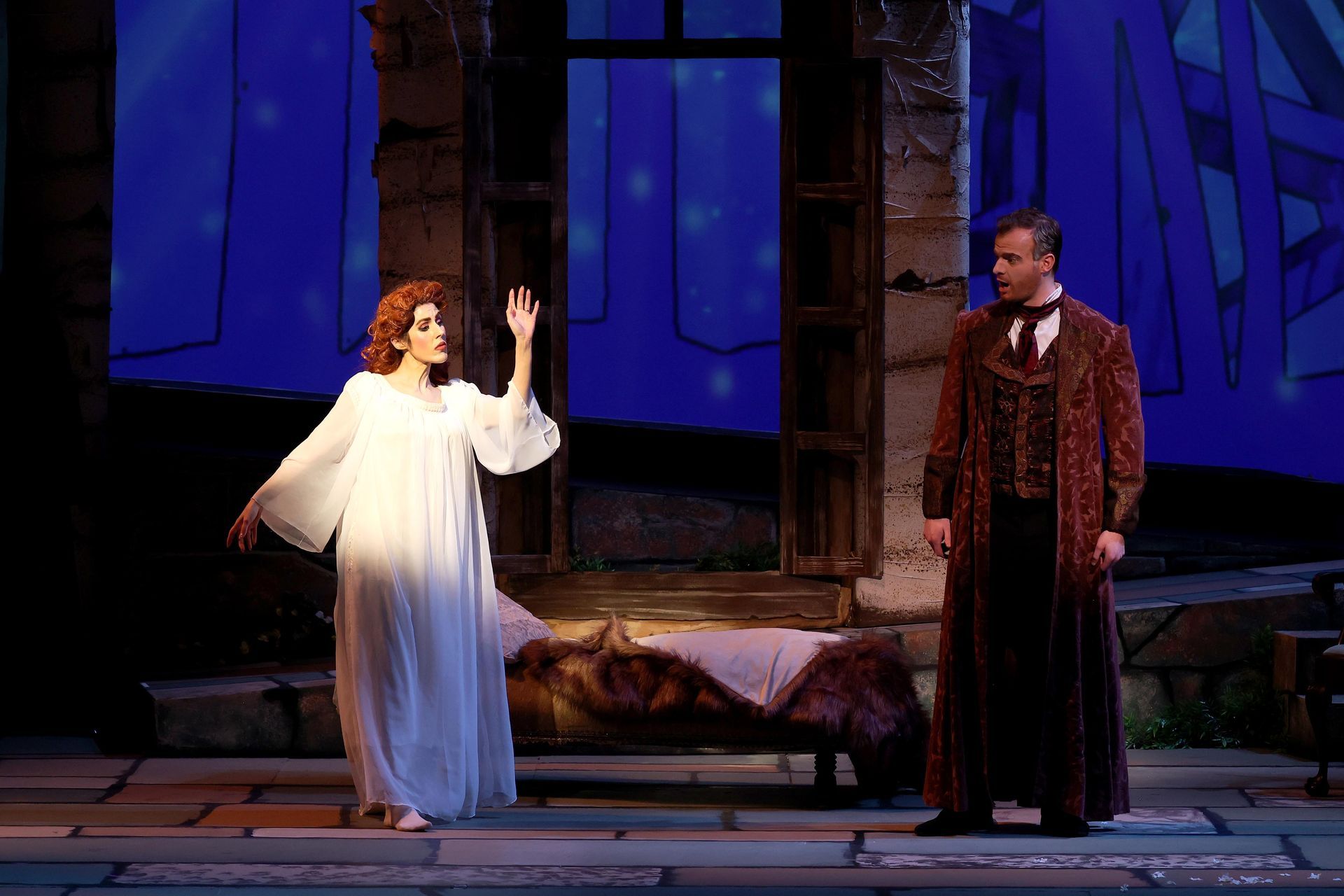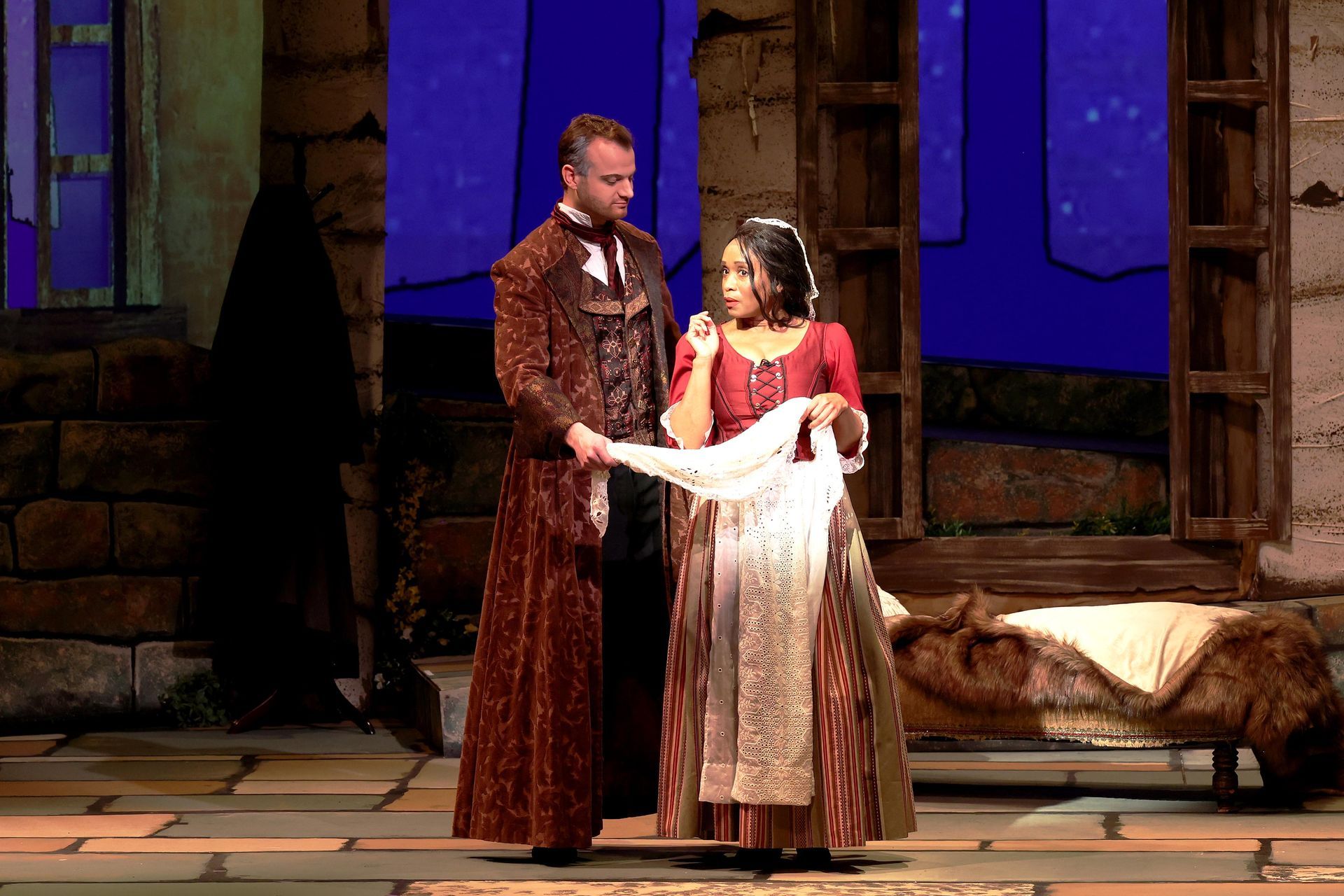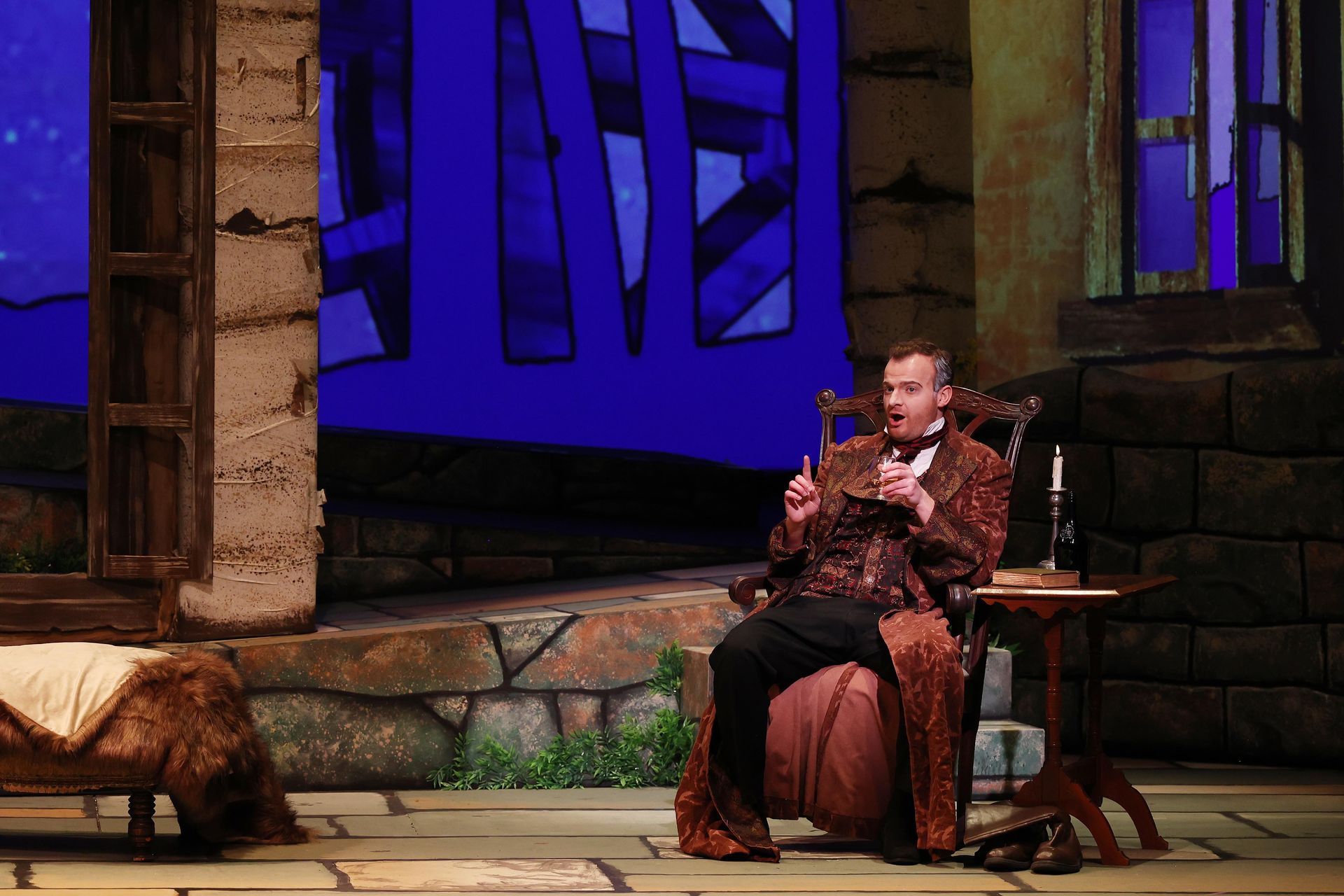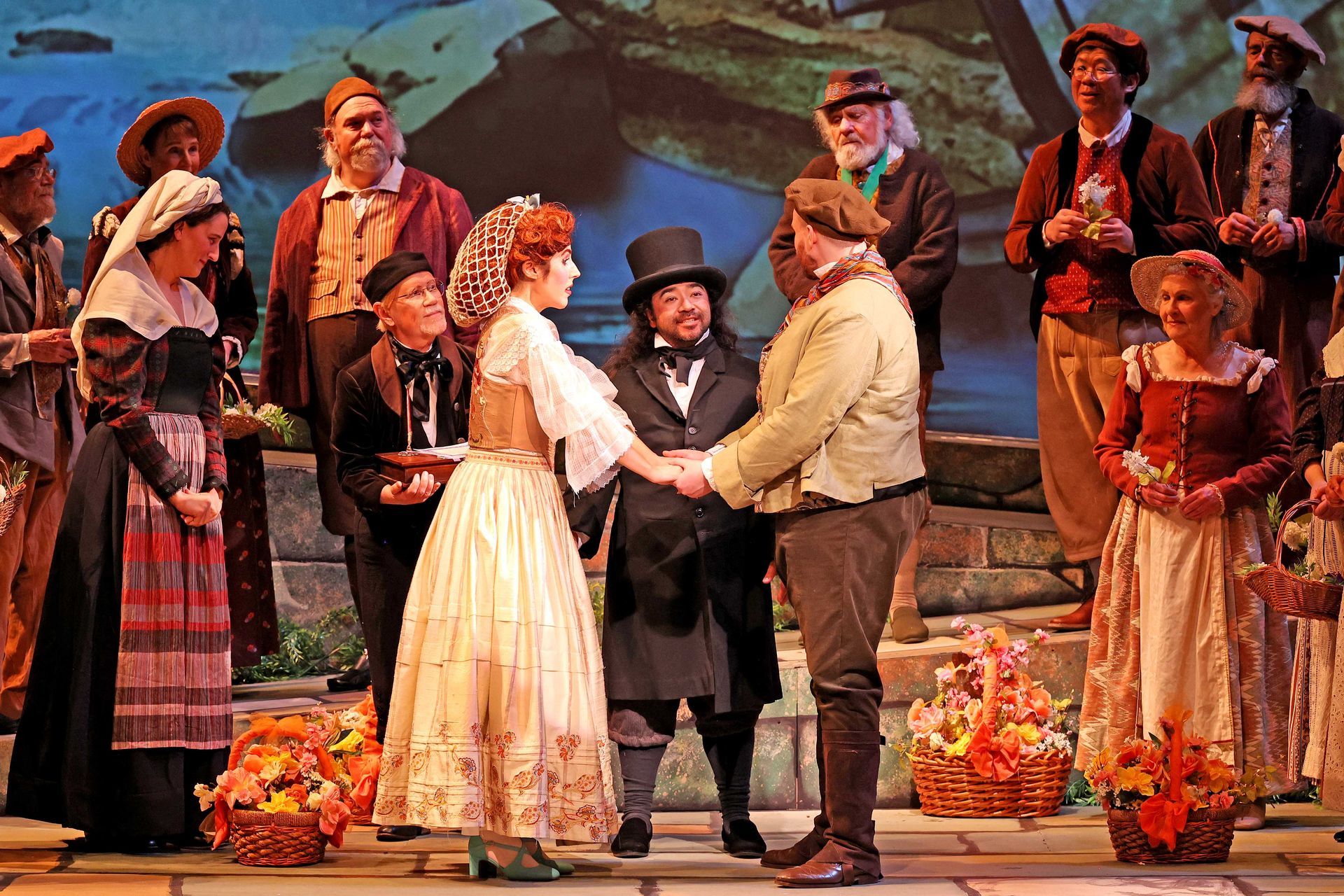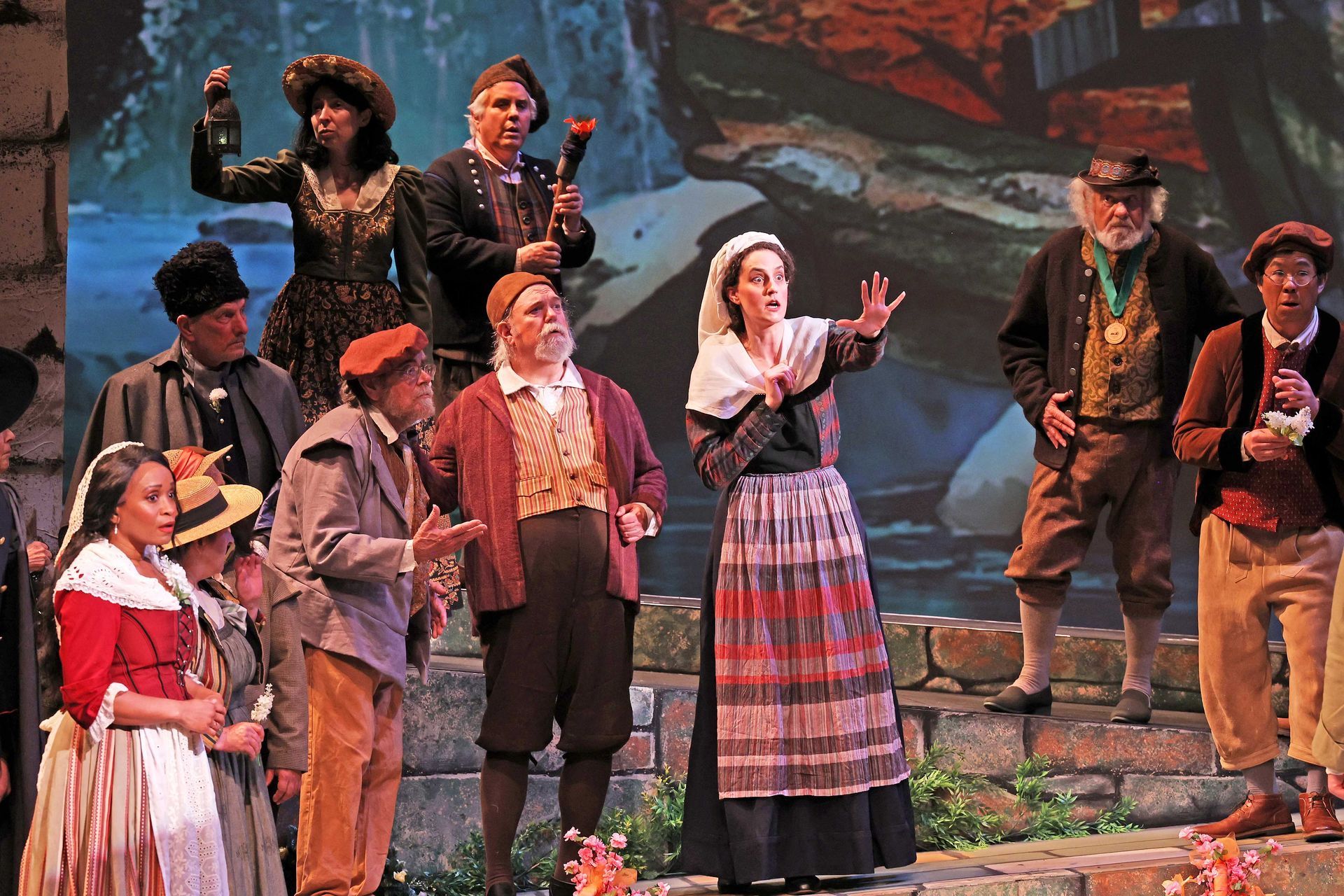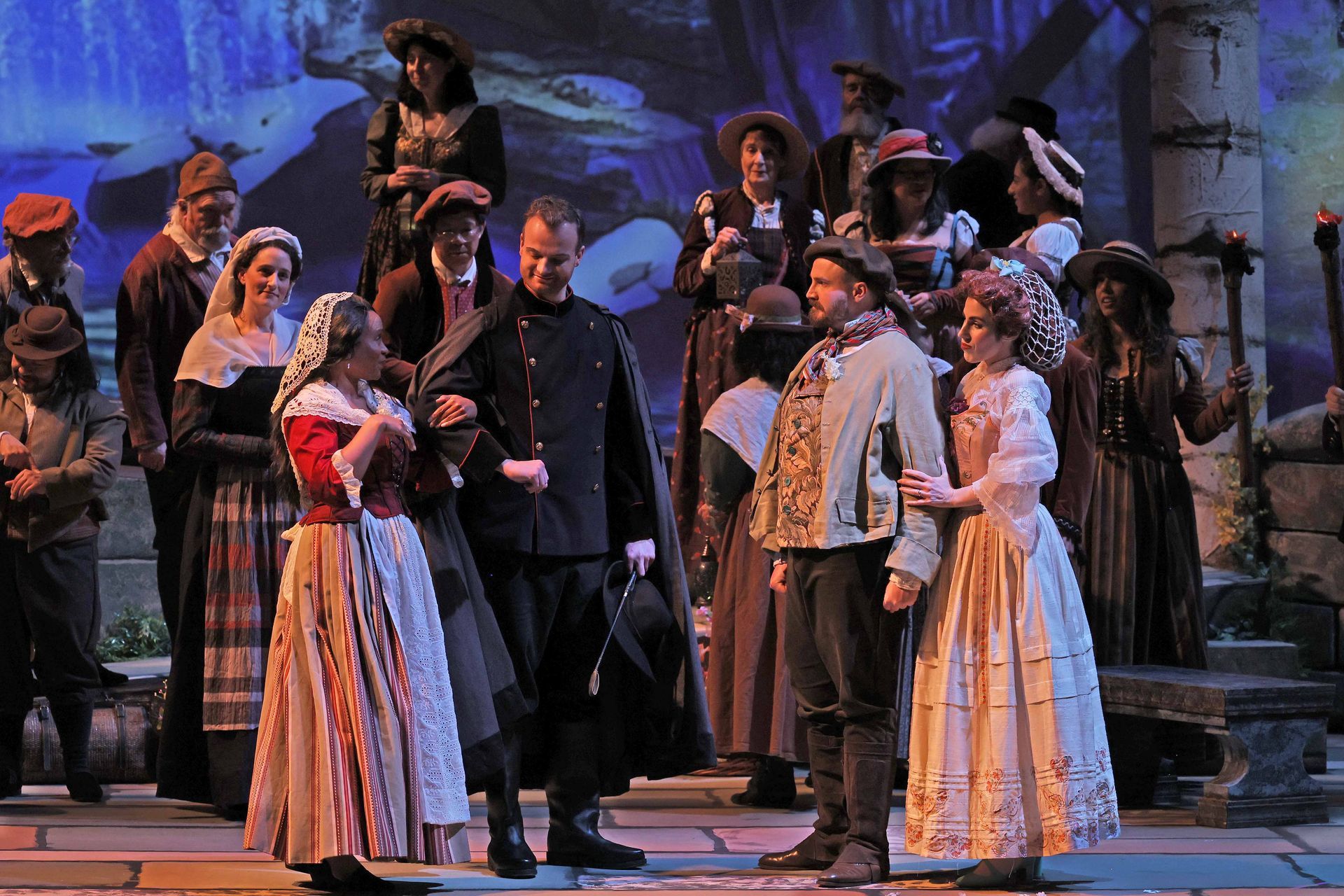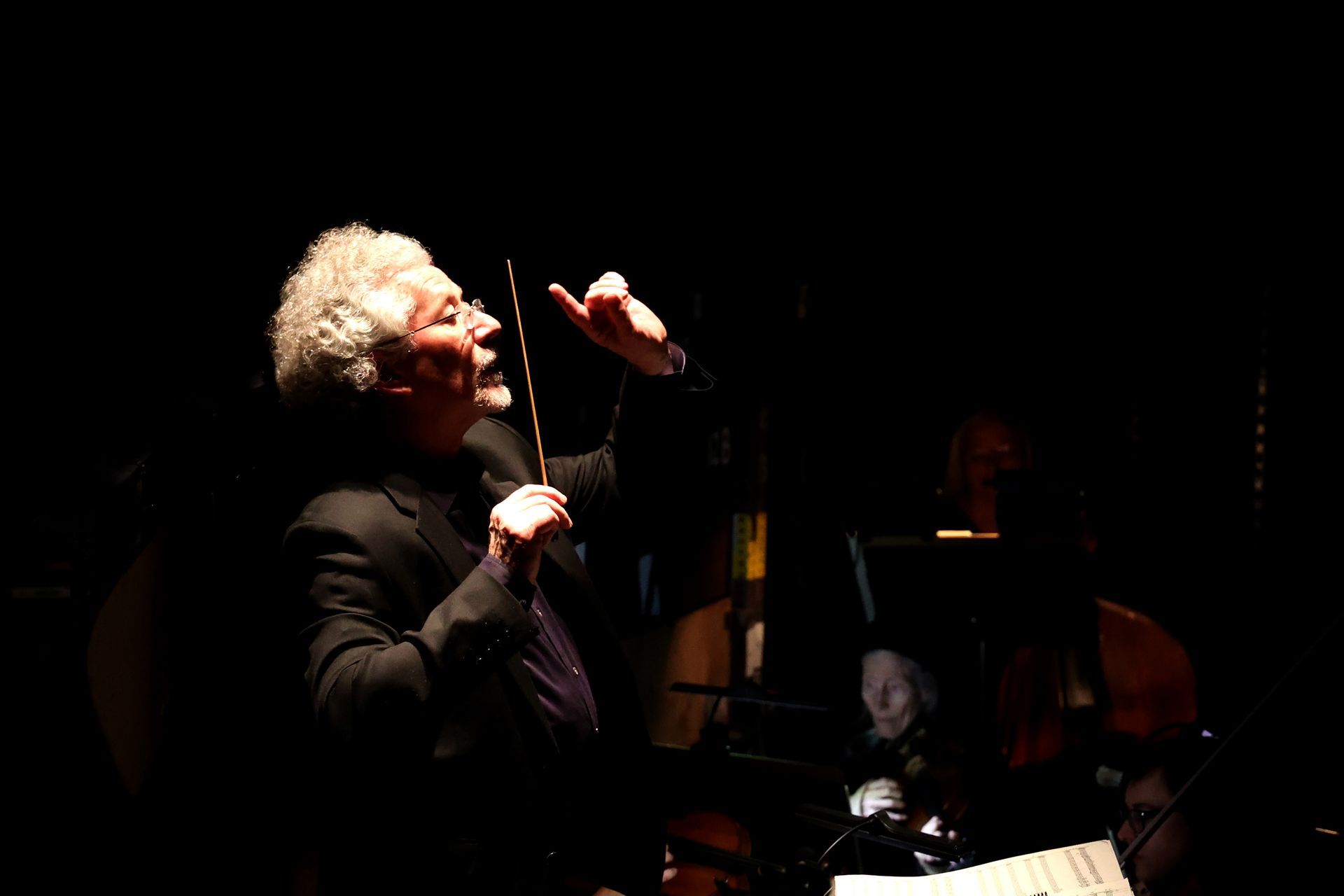
La sonnambula
(The Sleepwalker)
Vincenzo Bellini
Libretto by Felice Romani
based on the ballet-pantomime La somnambule, written by Eugène Scribe and choreographed by Jean-Piere Aumer premiered in Paris in 1827.
Opera in two acts.
Friday, Feb 14 - 7 p.m.
Sunday, Feb 16 - 2 p.m.
Saturday, Feb 22 - 7 p.m.
Sunday, Feb 23 - 2 p.m.
at the Lucie Stern Theatre
1305 Middlefield Rd., Palo Alto, CA 94301
Performances are 2 hrs and 40 minutes long, including 1 intermission.
FREE Preview with Piano
Thursday, Feb 6, 2023 - 7:00 p.m.
at the
Holt Building
221 Lambert Ave, Palo Alto, CA 94306
Limited seating.
Please plan to arrive by 6:45
About
La sonnambula
(The Sleepwaker)
World Premiere: Teatro Carcano - Milan
WBO Premiere: Feb 14, 2025
Pictured: The teatro Carcano in Milan
as it looked in 1914.
Considered by many to be Bellini's most beautiful score, La sonnambula was written at a time when stage works involving somnambulism (sleepwalking) where all the rage in Paris. As was often the case during this period, the work was written with a specific singer in mind, in this case, the legendary soprano Giuditta Pasta.
The story takes placec in a Swiss village. Amina is preparing to marry Elvino. Lisa, who is also in love with Elvino, resents Amina and the joyful celebrations taking place in the village on the occasion of their marriage. Alesio is interested in Lisa but she rejects him. A stranger arrives as the notary is in the process of marrying Elvino and Amina. It is Count Rodolfo, who is on his way to the castle and is looking for a place to spend the night, to avoid getting caught on the road after dark. He recognizes the village as a place he visited in his youth. He is very taken with Amina's beauty, and makes Elvino jealous with his praise for her. Amina protests she only loves Elvino. The villagers get ready to return home. They are apprehensive about a mysterious ghost that is seen walking near the water wheel every night. The Count dismisses those stories as superstition. Lisa offers the Count a room at her inn, and later comes into the Count's room on the excuse that she wants to know if he's comfortable. They flirt and she exits, forgetting her scarf on a chair. Night has fallen and Amina enters through a window, sleepwalking.
She stays asleep undisturbed on the count's couch. Later, Lisa returns and finds Amina in the Count's room. She calls everyone in and accuses Amina of infidelity. Elvino breaks up with Amina and decides to take Lisa to the altar. The count explains that Amina is a somnambulist and was not awake when she entered his room. Teresa, Amina's mother, produces a scarf belonging to Lisa that she dropped in the count's room when during their rendezvous. The villagers realize that Lisa is guilty of the very fault of which she accuses Amina. All rejoice as Amina and Elvino finally are able to marry.
Creative team
José Luis Moscovich - Conductor and Stage Director
Peter Crompton - Set Designer
Callie Floor - Costume Designer
Danielle Ferguson - Lighting Designer
David Gillam - Makeup and Wig Designer
Shirley Benson - Props Designer
Giselle Lee - Sound Designer
Pictured: set design by Peter Crompton
for the 2008 production of Der Fliegende Holländer
Cast
Amina - Michelle Allie Drever
Elvino - Chris Mosz
Count Rodolfo - Casey Germain
Lisa - Shawnette Sulker
Teresa - Courtney Miller
Alessio - Michael Orlinsky
The Notary - Arthur Wu
Chorus
Bruce Olstad - Chorusmaster
Joanne Bogart - Chorus Manager
Carol Barrett, Mark Baushke, Didier Benoit, Joanne Bogart, Richard Bogart, JoAnn Close, Inna Gitman, Michael Good, Barry Hayes, Lynne Hayes-Tucker, Susan Hogben, Joanne Newman, Divya Pillai, David Simon, Terra Terwilliger, Tim Tsang, Mayo Tsuzuki, Kim Van Tran, Paul Wendt, Arthur Wu
-
Orchestra
Andrew Lan (concertmaster),
Violin I · Emily Chiet, Virginia Smedberg, Heidi Modr
Violin II · Lisa Zadek, Frida Pukhachevsky, Julian R. Brown
Viola · Thomas Elliott, Rebecca Gemmer, Donny Lobree
Cello · Catarina Ferreira, Thomas Shoebotham
Bass · Marie Laskin
Flute · Leslie Chin
Oboe · Meave Cox
Clarinet · Arthur Austin
Bassoon · Amy Duxbury
Horn · Cathleen Torres, Diane Ryan
Trumpet · Richard Leder
Timpani · Don Baker
Percussion · Norman Peck
~
Orchestra Librarian · Virginia Smedberg
Orchestra Manager · Christy Crews
* First appearance with West Bay Opera
La sonnambula - 2025 - Media Gallery
PRODUCTION PHOTOS by Otak Jump
La sonnambula 2025 - Press and Reviews
